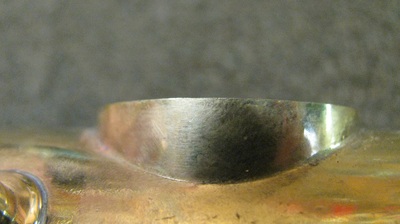Were Your Tone Holes Chamfered? What Is it? Why do You Do It?
These photos show tone holes on a Conn 12M. In the left column the tone holes a have not been chamfered, while on the right they have been.
This horn was overhauled several years ago, but lots of necessary mechanical work was neglected, so it is now in my saxophone repair shop in Seattle. The tone holes were filed during the previous overhaul. Some of them are even level, but none of them were chamfered. Any facing of a tone hole will leave an edge; a burr. The burr must be removed. The burrs can actually tear a pad, although it is rare, but they often grab the pad interfering with its stroke, and if you think you have seen really stick pads, just think how bad it is when there are sharp edges on either side of the tone hole rim. It's terrible.
These photos show tone holes on a Conn 12M. In the left column the tone holes a have not been chamfered, while on the right they have been.
This horn was overhauled several years ago, but lots of necessary mechanical work was neglected, so it is now in my saxophone repair shop in Seattle. The tone holes were filed during the previous overhaul. Some of them are even level, but none of them were chamfered. Any facing of a tone hole will leave an edge; a burr. The burr must be removed. The burrs can actually tear a pad, although it is rare, but they often grab the pad interfering with its stroke, and if you think you have seen really stick pads, just think how bad it is when there are sharp edges on either side of the tone hole rim. It's terrible.
Tell tale signs of proper chamfering will be on the outside rim of the tone hole, as seen in the top row here.
It does fade, so, if your horn was overhauled some time ago, the mark may be gone.
It does fade, so, if your horn was overhauled some time ago, the mark may be gone.



